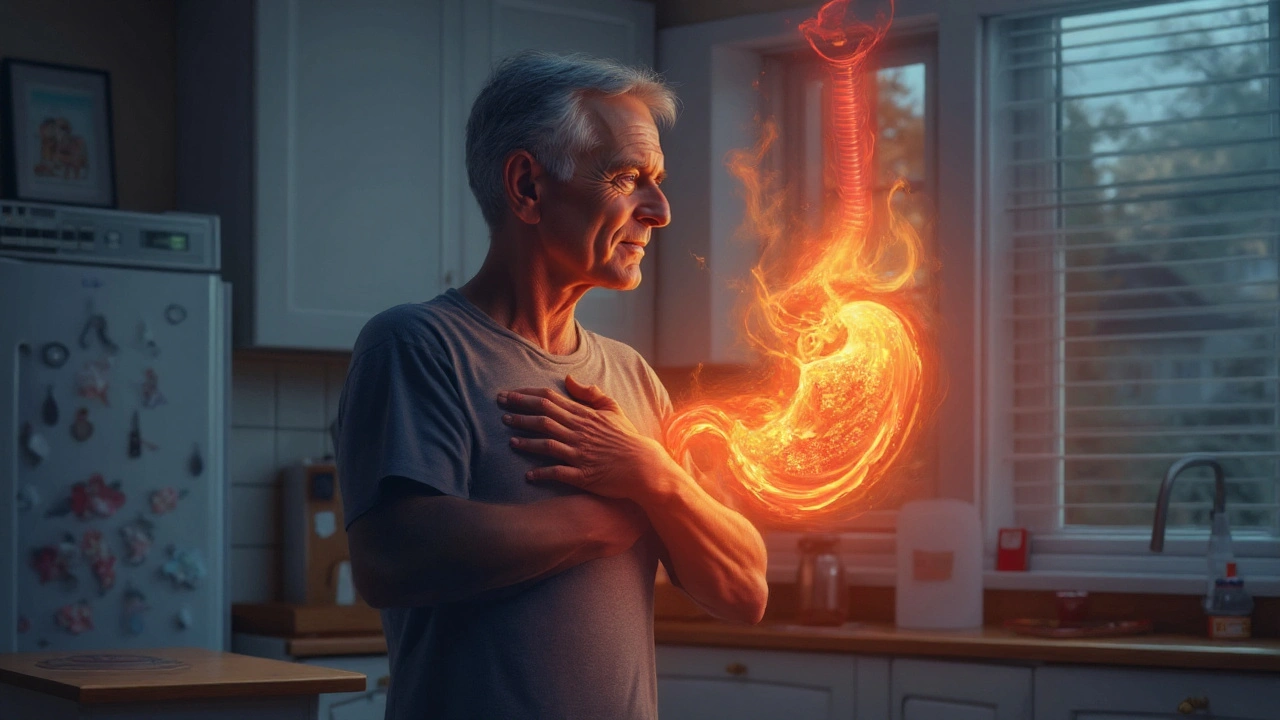If you’ve ever felt a burning sensation in your chest after a big meal or noticed a sour taste in the back of your throat, you might be dealing with GERD. That’s short for gastroesophageal reflux disease, a condition where stomach acid repeatedly flows back into the tube that carries food to your mouth. It’s not just an occasional heartburn – it’s a pattern that can damage the lining of your esophagus over time.
Typical signs include a burning chest pain (often called heartburn), trouble swallowing, a sour or bitter taste, and a feeling of something stuck in the throat. Some people also get chronic cough, hoarseness, or even sore teeth from acid wearing away enamel. The symptoms usually worsen after eating, when lying down, or after tight clothing that squeezes the stomach.
Most triggers are foods and habits that relax the lower esophageal sphincter – the muscle that keeps acid where it belongs. Common culprits are spicy dishes, fatty meals, chocolate, caffeine, alcohol, mint, and carbonated drinks. Eating large portions or eating right before bedtime also raises the risk.
Try keeping a simple food diary for a week. Write down what you eat, when you eat, and any symptoms that show up. You’ll start to see patterns – maybe a late‑night pizza is followed by heartburn at 2 a.m., or a cup of coffee after lunch brings on a sore throat.
First, change how you eat. Smaller meals spread throughout the day keep stomach pressure lower than a few huge plates. Chew slowly and put your fork down between bites – it helps digestion start before food even hits the stomach.
Second, adjust your posture after meals. Sit upright for at least 30 minutes; if you can, take a gentle walk. When you’re ready to sleep, raise the head of your bed by about six inches or use a wedge pillow. Gravity does most of the work in keeping acid down.
Third, watch your beverage choices. Swap soda for water or herbal tea, and limit coffee to one cup a day if it seems to bother you. If you love chocolate, try a small piece after a meal rather than a big bar on an empty stomach.
If lifestyle tweaks aren’t enough, over‑the‑counter antacids or H2 blockers can give short‑term relief. They’re safe for most people but don’t replace a doctor’s advice if symptoms persist.
When should you see a professional? If heartburn happens more than twice a week, if you lose weight without trying, have trouble swallowing, or notice blood in your vomit or stool, book an appointment. A doctor can run tests, prescribe stronger medication, or suggest procedures that protect the esophagus.
Living with GERD doesn’t mean giving up the foods you love forever – it means learning what works for your body and making small, sustainable changes. Keep track of triggers, eat mindfully, stay upright after meals, and don’t ignore persistent symptoms. With a bit of attention, you can keep that uncomfortable burn at bay and enjoy meals without fear.

Explore how Zollinger-Ellison Syndrome drives extreme acid production and why it often mimics or worsens GERD. Learn symptoms, diagnosis, treatment options, and practical tips for managing both conditions effectively.
View more
Discover the connection between albuterol and GERD. Learn how this common asthma medication can affect acid reflux, ways to manage symptoms, and tips for minimizing the impact on your digestive system.
View more